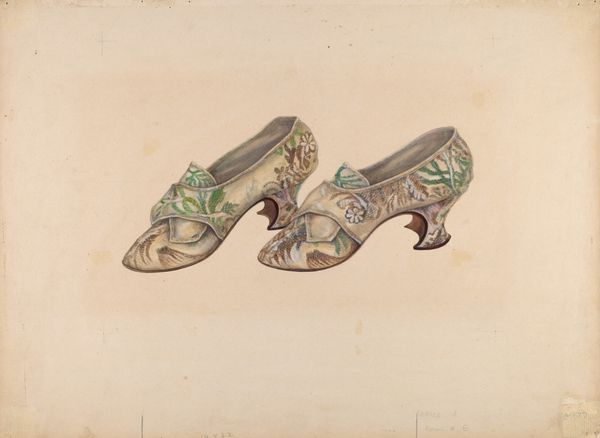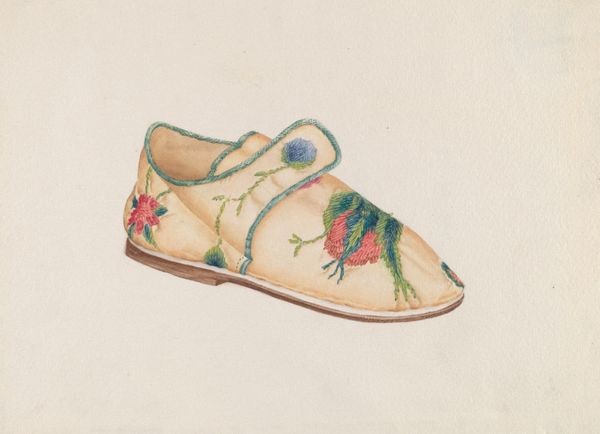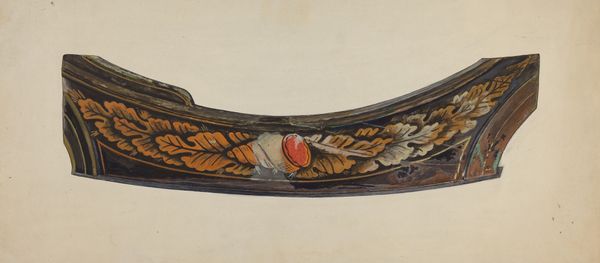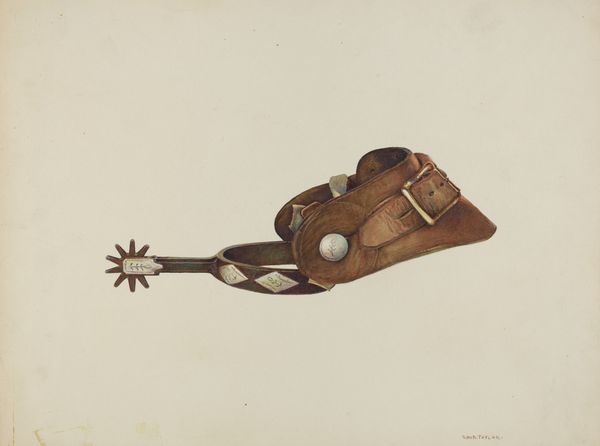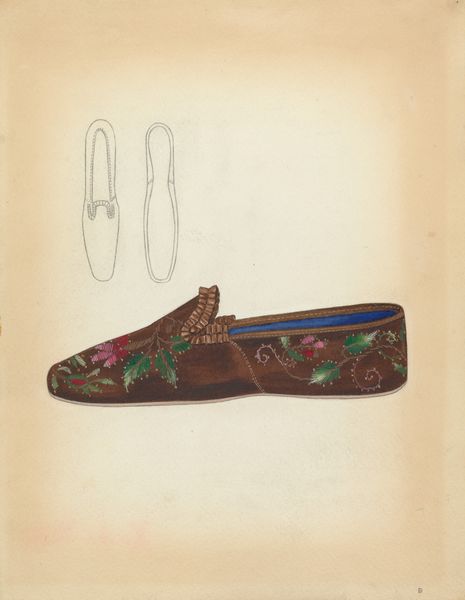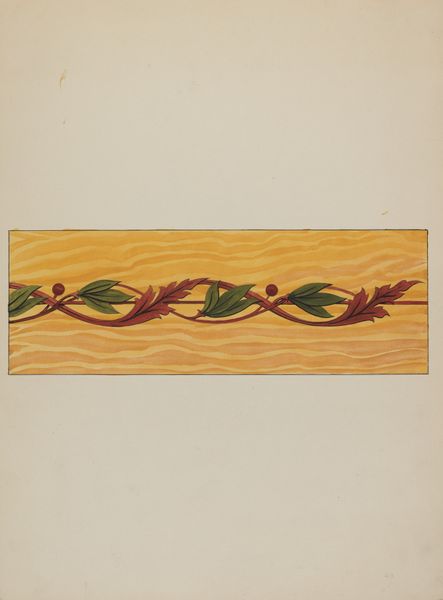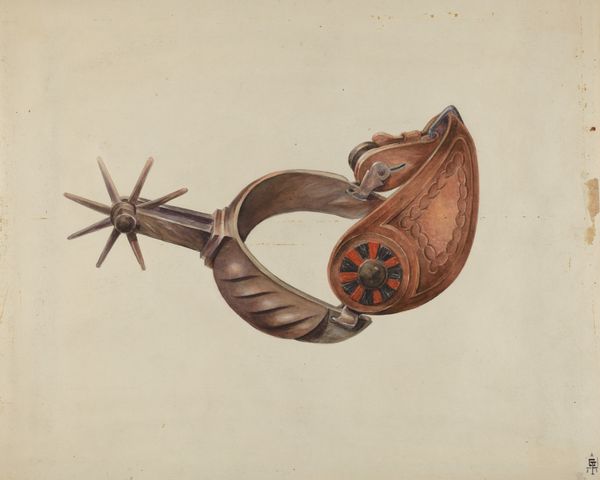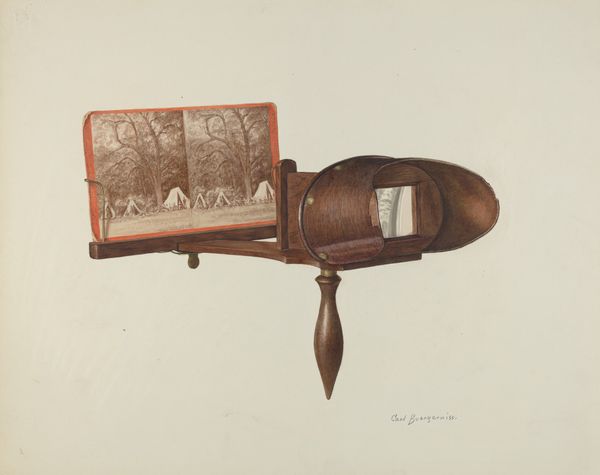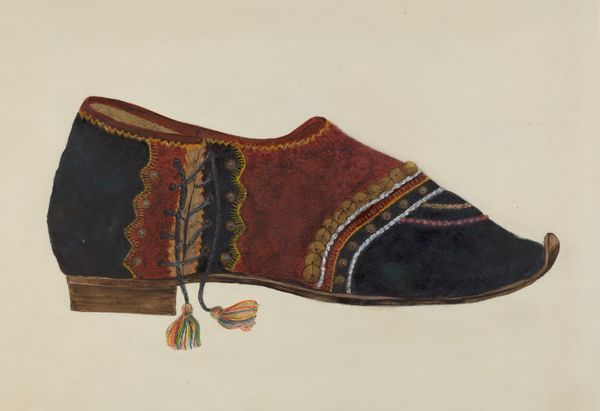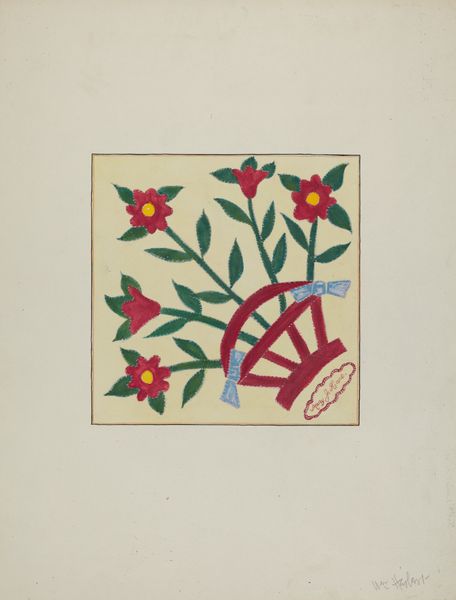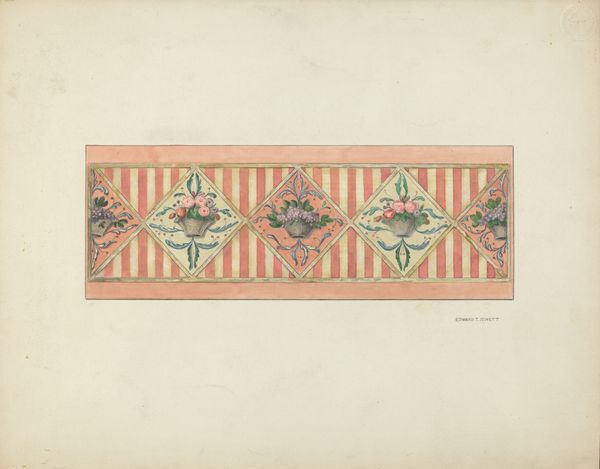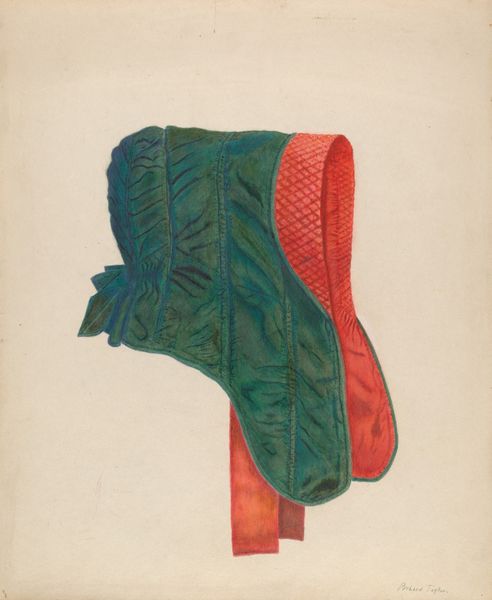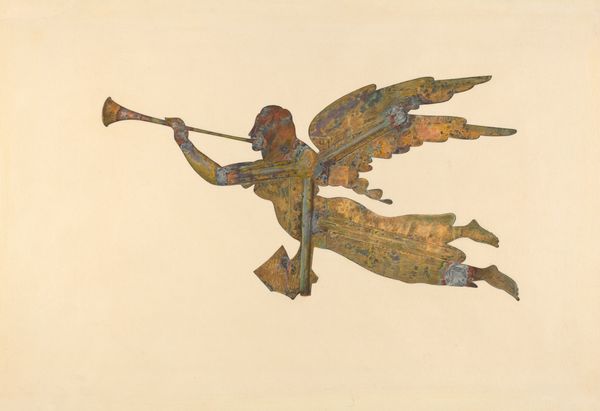
drawing, watercolor
drawing
watercolor
coloured pencil
watercolour illustration
watercolor
Dimensions: overall: 24.5 x 28.3 cm (9 5/8 x 11 1/8 in.)
Copyright: National Gallery of Art: CC0 1.0
Editor: This is "Lady's Overshoes," a watercolor and colored pencil drawing made around 1936 by Ella Josephine Sterling. The palette is quite muted, all earth tones and soft greens. There is a kind of charm to the everyday object elevated by close rendering. What do you see when you look at this, in terms of the artist's intent? Curator: The immediate formal element is the carefully balanced asymmetry, note how the placement creates a dynamic tension between the objects. Consider the shapes—elongated, rounded, pointed—echoed and offset, how the bows on each overshoe disrupt but complement the flow. How does the artist manipulate color? Editor: I notice the contrasting colors on the trim, the reddish brown near the heels versus the olive on the toe end, maybe it is some playful detail? But the bows give them the spark somehow. Curator: Yes. Observe how the darker outlines and the careful stitching details give these otherwise pedestrian objects an almost architectural precision. And do you notice how these horizontal forms sit slightly tilted as if to push toward the viewer? Sterling directs our attention to elevate form over function, in my opinion. Editor: So you’re saying even in an ostensibly simple depiction, there is sophistication at play within the forms themselves? It's not really *about* the shoes then. Curator: Precisely. We see an object deconstructed and meticulously reconstructed on the page. The very deliberate choices indicate more than a still life; it is an exercise in form, color, and texture—an orchestration of visual elements onto the page. Editor: This changes how I view this entirely. At first it felt quaint, a snapshot of a different time. But seeing it now as a calculated exercise is eye-opening. Curator: Absolutely. This seemingly straightforward piece encourages us to explore the possibilities within simple forms. An artwork's merit often lies beneath its surface.
Comments
No comments
Be the first to comment and join the conversation on the ultimate creative platform.
